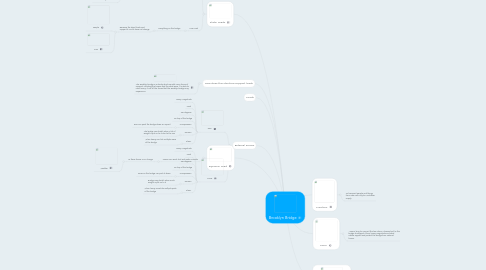
1. Static Loads
1.1. Dead Load
1.1.1. The bridge itself
1.1.1.1. As gravity is pulling it down and it does not change
1.1.1.1.1. The bridge
1.2. Live Load
1.2.1. Everything on the bridge
1.2.1.1. Because the dead load must support it, and it does not change
1.2.1.1.1. People
1.2.1.1.2. Cars
2. Dynamic Load
2.1. Snow, rain, wind, hail and water currents
2.1.1. As these forces CAN change
2.1.1.1. Weather
3. External Forces
3.1. Rain
3.1.1. Heavy Magnitude
3.1.2. Push
3.1.3. 180 degrees
3.1.4. On top of the bridge
3.1.5. Compression
3.1.5.1. Rain can push the bridge down on impact
3.1.6. Tension
3.1.6.1. The bridge can stretch when a lot of weight is put on to it due to the rain
3.1.7. Shear
3.1.7.1. When heavy rain hits multiple areas of the bridge
3.2. Snow
3.2.1. Heavy Magnitude
3.2.2. Push
3.2.3. 180 degrees
3.2.4. On top of the bridge
3.2.5. Compression
3.2.5.1. Snow on the bridge can push it down
3.2.6. Tension
3.2.6.1. Bridge may stretch when much weight is put on to it
3.2.7. Shear
3.2.7.1. When heavy snow hits multiple parts of the bridge

